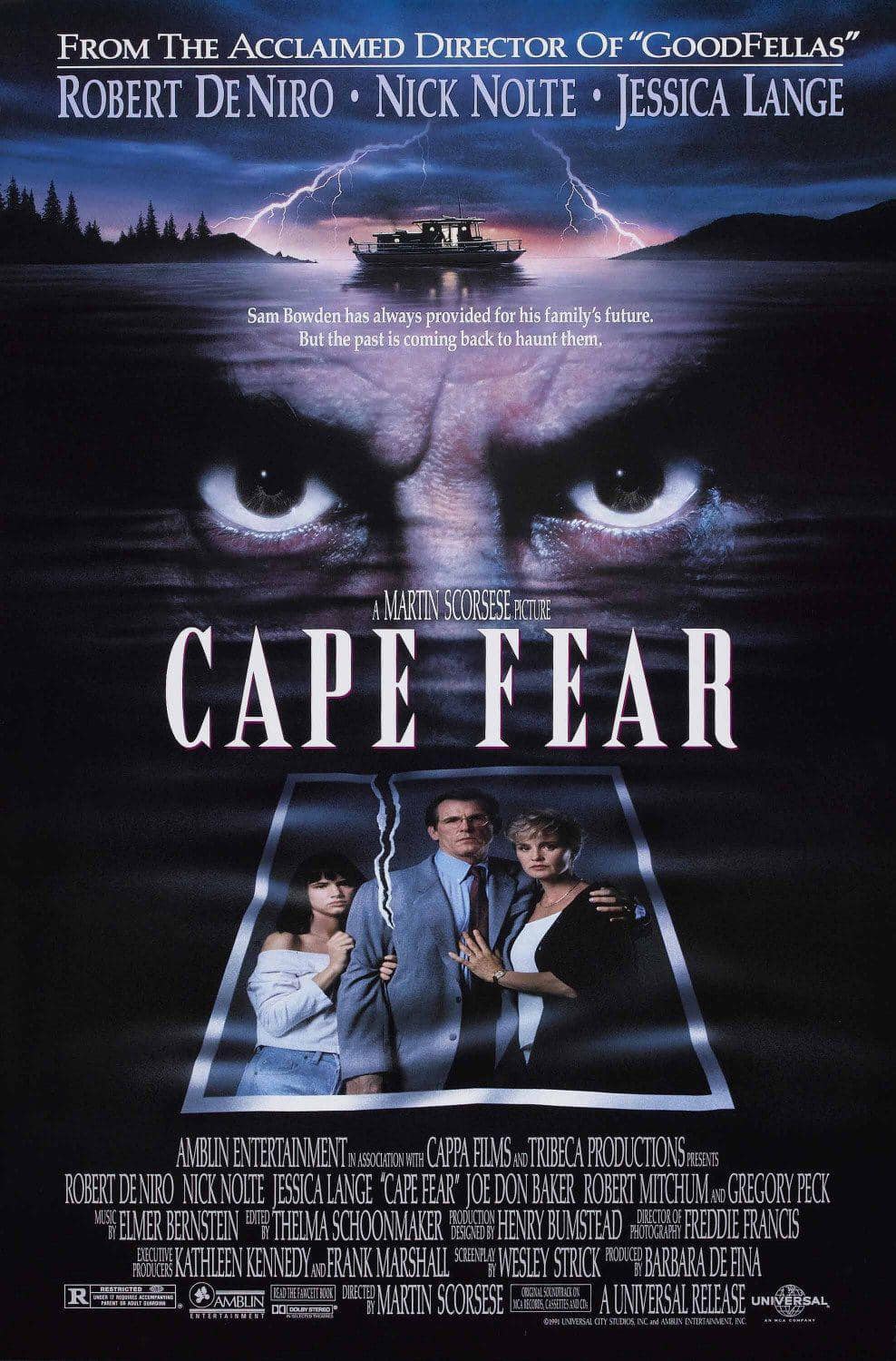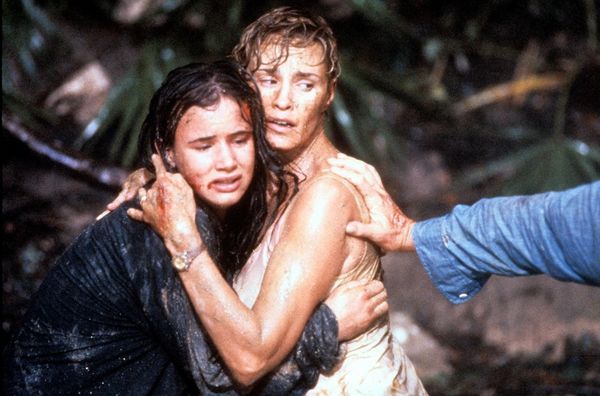Cape Fear (1991)

Title: Unveiling the Menacing Depths: An Analysis of “Cape Fear” (1991)
Introduction
Martin Scorsese’s 1991 thriller, Cape Fear, stands as a masterclass in psychological suspense and moral ambiguity. A remake of the 1962 classic, the film explores themes of vengeance, justice, and the darker aspects of human nature. With its riveting performances, particularly by Robert De Niro and Nick Nolte, and its haunting score by Elmer Bernstein, Cape Fear is more than just a suspenseful film; it is a deep dive into the human psyche and the consequences of our actions.
Plot Overview
The story revolves around Sam Bowden (Nick Nolte), a lawyer who once put away a dangerous convict, Max Cady (Robert De Niro), for a heinous crime. After serving a lengthy prison sentence, Cady emerges, hell-bent on seeking revenge on Bowden, whom he holds responsible for his incarceration. Cady’s return sets off a harrowing sequence of events that puts Bowden’s family in imminent danger, forcing them into a desperate struggle for survival.

Themes and Meanings
- The Nature of Vengeance and Justice
At its core, Cape Fear explores the consequences of revenge and the moral boundaries of justice. Cady, who embodies raw, unfiltered vengeance, represents a dark mirror to Bowden’s adherence to the law. The film questions the effectiveness and morality of seeking retribution, illustrating how the pursuit of vengeance can consume and destroy. Bowden’s attempt to protect his family reflects the complexities of justice and the lengths to which one will go to safeguard loved ones.
- The Duality of Human Nature
Scorsese delves into the duality of human nature through his characters. Cady, while embodying pure malevolence, also reflects elements of charisma and cunning, showcasing the thin line between charm and danger. Bowden, a man who represents law and order, is forced to confront his own ethical and moral boundaries when pushed to the edge. This duality emphasizes how external appearances can often mask deeper, more troubling aspects of one’s character.
- The Corruption of the Ideal
The film presents a critique of the American legal and moral systems. Bowden’s initial decision to compromise on the evidence, hoping to avoid a worse outcome, is revealed to have severe consequences. Scorsese uses this to highlight how compromising one’s ideals can lead to unforeseen and often catastrophic results, suggesting that integrity and adherence to one’s principles are crucial in navigating ethical dilemmas.

Visual and Auditory Techniques
Scorsese’s direction, combined with Robert Richardson’s cinematography, enhances the film’s tense atmosphere. The use of shadow and light not only creates a palpable sense of dread but also symbolizes the moral ambiguity of the characters. Elmer Bernstein’s score adds another layer of psychological intensity, heightening the suspense and emotional impact of the narrative.
Conclusion
Cape Fear (1991) remains a compelling examination of the complexities of justice, vengeance, and human nature. Through its gripping narrative and profound thematic exploration, the film challenges viewers to reflect on the nature of morality and the consequences of their actions. Scorsese’s masterful direction, coupled with powerful performances, ensures that Cape Fear is not just a thriller but a thought-provoking cinematic experience that resonates long after the credits roll.











